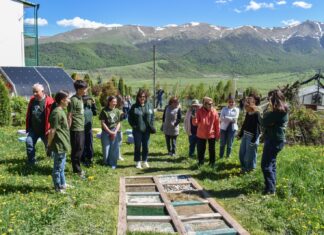By Bryant Rousseau
YEREVAN (New York Times) — Children in Armenia start thinking about their careers at a very young age — around six months or so.
When an infant’s first tooth arrives, typically in four to seven months, a celebration takes place known variously as the “agra hadig” or “atam hatik.”
As part of the ritual, objects symbolizing different professions are arrayed in front of a child: a microphone for an entertainer, a stethoscope for a doctor, scissors for a tailor or money for a banker. Whichever object the baby chooses first is thought to be a sign of where the child’s professional aptitude lies.
With the appearance of teeth, a child can begin to eat solid food, and the acquisition of this skill is believed to be a propitious time to foretell what the future holds, said Yulia Antonyan, a professor in the department of cultural studies at Yerevan State University in Armenia’s capital.
There are no obligatory objects, but sets available for purchase will often include traditional artisan tools and choices epitomizing a more modern lifestyle. Parents are free to add to or omit from the mix as they wish.








